#how avian they are (in terms of characteristics and appearance) is up to you
Explore tagged Tumblr posts
Note
Hey had you seen the posts about Murphy & his chick? Now imagine the chick is Desmond & his new single dad is one of his ancestors who, after fruitless brooding, finally has a baby. Animal or human.
https://www.tumblr.com/cookiemonstari/714456378863960064/fearthefuzzy-penguinsweaters-afeelgoodblog?source=share
I saw the first post about how Murphy incubates a rock so the link with the update on Murphy’s dad life is a pleasant surprise. I hope the best for him and his unnamed child.
As for the idea, why not both?
Humanoid figures with avian characteristics, including wings because wings AU are fun.
I kinda like the idea of this being a single-dad Ratonhnhaké:ton setup because this gives us an excuse to have Altaïr and Ezio be his ‘we’re trying to help’ dad friends who usually give contrasting advice. (Also, Edward wants to be called ‘grand pappy’)
Perhaps the chick would be brought in by someone else (maybe Bayek?) and given to Ratonhnhaké:ton to take care of. Ratonhnhaké:ton has wanted a child of his own for a while now but, now that he was a father, he wasn’t sure what to do.
Enter the commonly used proverb “It takes a flock to raise a fledging.” and everyone in the same avian community tries to support Ratonhnhaké:ton as he and Desmond grow as father and son.
Additional suggestions for this fic:
We can make Jacob, Evie, and Arno the same age as Desmond so he has childhood friends.
Darim, Sef, Flavia, and Marcello can be older kids (with Darim being the oldest) so Desmond would also have big brothers and sisters.
Of course, if you wish for everyone to spoil Desmond, you can make it that Desmond is the only fledgling in their flock as all the canon children (Darim and the others) have already grown up and have flown out of the nest. Jacob, Evie and Arno are around the same age as Ratonhnhaké:ton instead and they can act like the cool aunt and uncles.
If you want to hammer in the angst, make it clear that Desmond sustained injuries that can only be seen as ‘inflicted’ and not accidental. Whether this was done by his parents or by someone else is up to you.
Aveline could be Ratonhnhaké:ton’s best friend that he goes to frequently when he needs to complain about all the ‘advice’ he gets from his dad friends.
An easy way to add Shaun, Rebecca, and Clay are for them to be traveling merchants or perhaps researchers who give information to the flock whenever they pass by. They could be the ones to have the next plot point if you ever need an easy way to push the plot along XD
Ratonhnhaké:ton sings the same lullaby that his mother used to sing to him whenever Desmond has a hard time falling asleep. Later on, the two of them hum it whenever they groom each other’s wings.
#wing au#sorta#how avian they are (in terms of characteristics and appearance) is up to you#you know what would make this more angst-ier?#desmond doesn’t have any memories of his life as the human desmond miles#but#he has nightmares#the older he gets#the more of desmond miles’ life comes to him as dreams#with the ‘hint’ being that desmond the avian#is actually desmond miles transferred to another world and regressed#for a chance to have a happy life#assassin's creed#desmond miles#ratonhnhaké:ton#connor kenway#altaïr ibn la'ahad#ezio auditore#ask and answer#teecup writes/has a plot#fic idea: assassin's creed
28 notes
·
View notes
Text
Study & Theories for the Finnari
Hello once again dear readers. For those of you who haven’t heard of @starr-fall-knight-rise I suggest visiting them and reading their stories, as they are some of my favorites and they form the basis of this post here.
I was very pleased with how well received my last post like this was, in which I covered the known facts for the appearance of an alien species of starr-fall’s (the Gnar’lak), as well as provided my own theories and speculations regarding what I thought their appearance might be. Today I will be doing the same but for the species named “the Finnari”.
This is a species that I’ve been interested in for a while now as they are described as seeing in infrared (seeing heat) and that in the written universe of starr-fall-knight-rise they are one of three alien species that enter into interspecies relationships with humans (something that intrigues my romantic tendencies).
I had initially intended to do this species before the Gnar’lak, but then realized that it would provide some necessary details do to the Gnar’lak first as that species would’ve had a large impact on the Finnari (for more details on how please read starr-fall’s stories).
Same as last time I will start by providing the confirmed facts about their physical appearance provided by starr-fall’s stories & answered questions, then I shall list what we can infer based on those facts & other details, and finally wrap up with my own theories that seem the most plausible.
Before I start here are some disclaimers: First: I want to give thanks to starr-fall-knight-rise for allowing me to do this and for receiving my last post positively, I in no way own the Finnari or make any claim to doing so & am doing this simply because I love starr-fall’s stories & want to contribute in some way to the fandom. Secondly: I am by no means a biologist & most of my research comes from the internet, if I am wrong please do not bash me hard and simply provide clarification in the comments. Thirdly: I will use reference images to help describe my thinking and theories, I in no way own or take credit for these images.
The Confirmed Appearance Details
In this area there is not much to go on, no true concrete facts like with the Gnar’lak, the most obvious will still need clarification in the next section, but I will give them here to start you off with a vague idea of the appearance.
“The radio signal intercepted him on his posterior receptors, & he turned to face the speaker.”
“-lowered his third limb from his infrared receptors.”
“-smiled at the little Finnari.”
The Inferred Appearance Details
“-rate each species from weakest to strongest”... “Vrul/Gibb, Bran, Finnari, Iotans, Teraski,-” = Taking this in combination with their stated small size (described in context with a human) I would say we can infer that they don’t have any exceptional musculature.
“a prey species” = With this I think it’s a fair bet too infer that they do not have the typical predator characteristics such as large fangs, claws, etc.
“-different races rank in terms of instantaneous speed?”... “Humans can outpace everyone else”... “Teraski, Vrul, Celzex, & Finnari have no chance.” = In combination in their size this can infer that they have no specialized running muscles or traits such as digitigrade legs & the like.
“-back in the old days when they weren’t at war with each other the Gnar’lak kept Finnari on farms.” = With this we can infer that the Finnari might give birth to multiple young as this is a typical trait of a species that is farmed like livestock. Taking into consideration that this is a species that garner the attraction of humans I’d say we can infer that they also follow the trend of the Drev & the Teraski and give birth to live young.
“How many rounds it takes to kill-”...”a 22 round” = With this we can infer that they likely do not have tough skin, shells, or shock absorption, and may even have softer bones than humans.
“Which species use farming-” ... “The Finnari” = From this we can infer that they have prehensile limbs and appendages for manipulating tools & picking crops, and thus are likely herbivores with the mouths for such.
“Infrared and thermal sensors within his eyes ” = This is one that I will go into more in the section for theories, but the basic thing we can infer from this is that the Finnari likely cold-blooded, because if they were mammals or avians they would likely blind themselves by looking at each other.
“interstellar communication tower” ... “Finnari rocket technology” = This is another detail we can use to infer that the Finnari have appendages with the dexterity for manipulating tools.
“-the humans themselves were beacons of radiance allowing heat to pour off their skin & into the atmosphere. It was a wonder they could keep themselves running at all losing as much energy as they were.” = This is another detail that leads into inferring that they are cold-blooded and might also be another reason they are likely to get into relationships with humans.
“-the creature gave a confused look” = this is a detail that infers expressive facial features that humans might be able to recognize, such as brows or the wrinkling of a nose.
“The Finnari whistled amused” = Whistling is a sound made by the puckering of lips or positioning of the tongue along teeth, or in the throat among animals, so we can infer that there is a possibility that they have lips.
“nodded & scurried off” = This detail is a little more vague, but generally the motion of “scurrying” brings to mind a creature moving quickly on all fours such as a mouse or other small animal, even though the actual definition does not include that. I’ll go more on that in the theory section.
Those are the main items I intended to cover in the Inferred section but now I’ll also cover the items from the Confirmed section to give an idea of what they imply.
“The radio signal intercepted him on his posterior receptors, & he turned to face the speaker.” = This is a complex one, as radio signals are a technological term that would imply that the Finnari have a form of biological “walkie-talkie” for communication through “prosterior” receptors that would be sensory organs that face backwards. Given the amount of interference that might come with this when around technology that gives out and receives radio signals, particularly human technology, I think the more likely thing this infers is a piece of equipment the Finnari was wearing but I will cover this again in the Theory section.
“-lowered his third limb from his infrared receptors.” = With this we can infer that the Finnari likely have more than two arms or possibly a long prehensile tail that can reach and cover their eyes. I’ll go more on this in the Theory section.
“-smiled at the little Finnari.” = This is actually possibly the most concrete bit of physical description we have for the Finnari as it is from an adult human male to an adult female Finnari, inferring a height disparity that puts the Finnari as being noticeable smaller than humans.
Theorized Appearance Details
To start this section off let’s look back on two details from before about the Finnari, them being cold-blooded and being prey species, for which I would likely theorize that they are lizard-like reptilians for the following reasons:
Animals that fall under the “cold-blooded” attribute include: Reptiles (snakes, lizards, turtles, tortoises, alligators, crocodiles, etc.), some insects, amphibians (frogs, toads, salamanders, etc.), & fish.
We can rule out the Finnari being insects due to the fact that humans would need to find them attractive.
We have no indication that Finnari require water or inhabit water so we can rule out them being fish.
Having tough skin or hard shells would’ve interfered with the Gnar’lak feeding on the Finnari so it makes sense they wouldn’t resemble turtles or tortoises.
Factoring in that they are a prey species and thus likely herbivorous it’d make sense for them to be reptiles as multiple reptiles are herbivores while amphibians are generally carnivores or omnivores.
Referring back to earlier about the size of the Finnari I’ll say that is another trait that would pair well with being cold-blooded, as larger creatures require more body heat. However regarding specifics I’d imagine them being somewhere between 2ft.-4ft in height, small by human standards but not so small that being in a relationship with a human or being fed on by the Gnar’lak would be impractical.
To add on some attributes for being cold-blooded let’s talk about ways the Finnari could absorb heat. Being lizard-like reptiles they could warm themselves using insolation (the absorption of the sun's rays ) and conduction (absorbing heat from the ground or other hot surface), though I think the later has it’s disadvantages and is unlikely as the Finnari are at least bipedal and thus wouldn’t be able to warm themselves properly without lying down. With the first option however the proper technology can be used to replicate the warming effects of the sun’s rays.
This can factor into appearance traits as they could use a technique similar to the frilled-neck lizard (see image below) who use impressive frills to create more surface area to absorb heat and helps to keep warm.
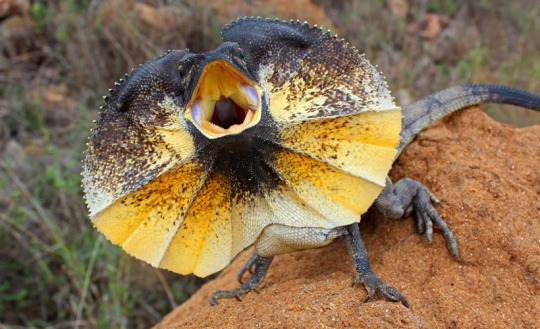
For the Finnari a theory and adaption of this trait could be that they use frills on their backs to absorb heat adequately in a manner similar to below:


Another alternative is that they could do what some lizards have done and adapt to be able to change color, turning darker colors to absorb heat better and turning lighter colors to cool down.
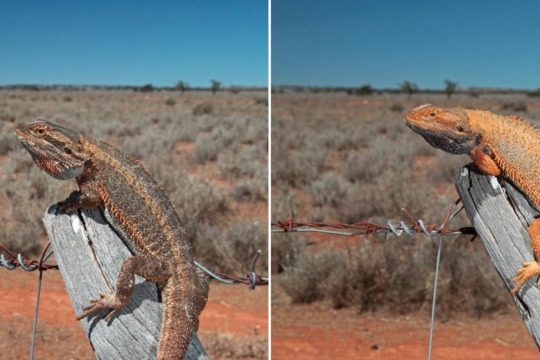
Moving on to more obvious physical traits let’s go over the options for the “third limb”, which as stated before could mean either multiple arms or a prehensile tail. To cover the simpler option, a prehensile tail with a fan-like frill (see images below) could work properly in the context of shielding eyes, while also tying into the above discussion with an additional frill for absorbing heat.

The other option is having multiple arms, for which I’d theorize as having four to avoid having too many limbs while also keeping the number even and the physical layout symmetrical, which is another trait humans typically consider attractive. For this there are many options for the positioning of the arms but I’d like to tie it in with a topic I touched on briefly in the Inferred section regarding the “scurrying” motion and how it often evokes an image of a creature running on all fours.
When thinking of this I theorized that the Finnari could be a variant form of facultative biped, which is a creature that is capable of walking or running on two legs in spite of normally walking or running on four limbs or more, albeit only for a limited periods of time, with the variant being that they do so in the reverse if possible of normally being on two legs and running on four or more limbs. And when thinking of the body structure that could facilitate such a thing with the possibility of four arms taken into consideration I happened upon a creature from the Star Wars: Clone Wars series called the momong (see images below) that seemed to have the perfect body structure to use as reference, though with possible longer legs even if the short legs would tie into the lack of running speed.

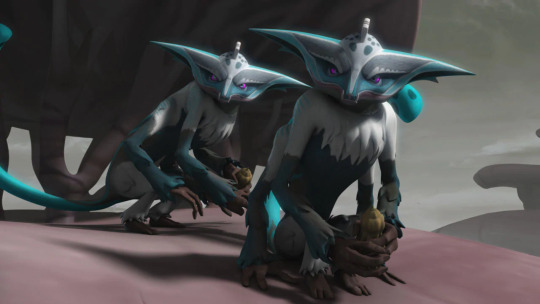
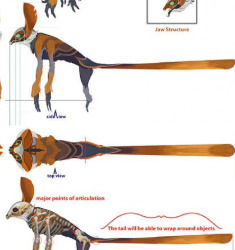
For the head and mouth structure I’d theorize that it’d resemble something like an iguana, chuckwalla, or uromastyx (images in respective order below) as those the most common herbivorous lizards, and a snout-like head that positions the eyes on the sides is a common trait of a prey species. We should also remember from the Inferred section that they might have lips for whistling and muscles in the brow and nose with more range of expressive motion than human lizards.

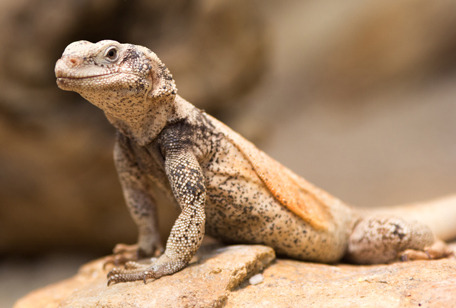
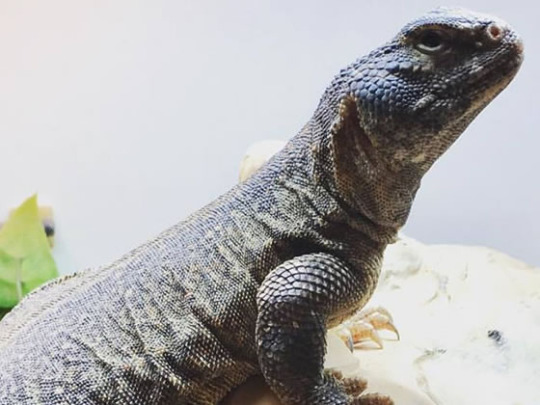
Now let’s discuss the Finnari’s most notable feature, which is their infrared vision. While one might think that this would equal an easy to determine physical feature of having eyes similar in appearance to a snake’s, research actually proves that wrong. Stated before in the Inferred section with the “Infrared and thermal sensors in his eyes”, this is different from snakes who have holes on their faces called pit organs, which contain a membrane that can detect infrared radiation from warm bodies:


Of the cold-blooded animals that see infrared the most notable one that actually uses its eyes to do so is the bullfrog. So the Finnari might actually have an eye appearance like so:
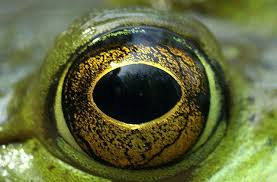
And finally I’ll wrap up with the most difficult trait to research and come up with a proper theory for, which is the posterior receptors for radio signals. As stated having this would be a rear-facing or back-mounted sensory organ that would function as a biological “walkie-talkie”, which would definitely pick up a lot of interference around technology that utilizes radio signals/waves, like another form of hearing that receives constant noise, and thus would be impractical, and there is no example of an animal using this on Earth. While one can take some artistic liberty for it & say the Finnari possess such a sensory organ there is no accurate example that I would feel alright providing. For my theories I’ll simply think that these radio receptors are a form of technology rather than biology.
I apologize for taking so long to post this collection of studies and theories and hope that it is informative and close to the mark of what starr-fall imagined. I honestly don’t know which species I’ll do next though I have considered doing the Tvek. If any readers have tips on where they think I could improve in my writing please comment.
#starr-fall-knight-rise#alien#fan theory#research#species#just speculating#sci fi#romance option#Studies & Theories of an Alien Species
69 notes
·
View notes
Text
Vaguely trying to word details on the beastfolks/beastkin
Beastfolk are animal-people, they’re... Basically anthro animals in appearance (...in terms of reproductive organs, however, they’re very close to human no matter their animal characteristics--yes that’s relevant). They were created from magic in an age long, long past by a massive magical working that changed the nature of the world itself.
Beastkin are those descended from human-beastfolk couplings. For the most part, part of the magic that allows beastfolk to exist causes the children to take after the parent who does the carrying, seeing as there would otherwise be a number of combinations that are just incompatible with life. Even among beastfolk-beastfolk pairings, you’d end up with situations like that.
Sometimes you get what’s called a “throwback” beastkin--these are only born as second-generation human-beastfolk children, or rarely when two human parents with beastfolk acnestors (aka beastkin) have a child. These are basically human except they have some animal features--might have inhuman ears or teeth, claws, a tail, fur or feathers or scales in some areas, etc. Depending on how they look they may be able to pass as human or non-throwback beastkin.
Beastfolk, being born of magic, have the strongest magic abilities--every single one. The least powerful among them is at least as strong as the most powerful fully human in terms of magical potential. Beastkin have more of a range but even the last powerful among them tends towards the middle or upper-middle range of normal human potential, with throwback beastkin trending even higher on average. The more diluted the beastfolk blood the closer to the normal human range they get.
In terms of mental states, beastfolk are basically just furred/feathered/scaled humans, they’re equally aware of themselves and the world, intelligent, have their own cultures (both an overall culture as beastfolk and specific cultures for their individual tribes--mammalian, reptilian, or avian--not to mention more localized variations for their individual communities), etc. They’re people, same as humans, and this is just an accepted fact in the world.
In most places beastfolk and humans get along fine, with there being multiple larger cities with very mixed populations. Even in places with less mixed populations (some beastfolk simply find city life a little too much as many of them have enhanced senses and that many people in an area can be overwhelming) there’s usually not much conflict and what conflict there is can usually be resolved by talking it out.
In some places the beastfolk keep separate because they don’t trust or get along with the humans, in some areas the humans don’t trust or get along with the beastfolk, it really depends on local history and if there’s any clashes. Usually the clashes arise from something different and over time they mutate into simply not wanting anything to do with the other kind. But by and large there’s peace for the most part.
Or at least there was, eventually one nation decided they should be in charge of some neighboring countries and realized that beastfolks and beastkin, with their superior magic, would be the perfect troops to flatten any resistance. The beastfolk and beastkin largely were not interested in this, though some joined up because they agreed. This... Led to hunting down of the beastfolk/beastkin to force them into military service and ultimately led to the beastfolk deciding they’d rather cease to exist than allow their magic to be abused.
This largely stems from the fact that the original working that resulted in the beastfolk being created from the humans work cast it was done to alter the nature of magic itself to make it much, much��harder to use for war--there had been a series of wars that escalated to near-global destruction because of the amount of magic used and the devastating effects to which it was employed. (Back in those days humans had drastically higher capacities for magic--the working changed that, altering the nature of how beings can use magic in the world from then on)
As “guardians” of sorts of magic, the beastfolk decided to destroy themselves completely (their blood, specifically, is a powerful magical catalyst and can be extracted and used even if they themselves will refuse to work spells) rather than be used to wage war like that. Beastkin went into hiding for the most part, and many of them simply pass as especially talented humans if they don’t outright downplay their potential.
Throwback beastkin are in general in much more of a bind and usually either hidden away, altered to remove their more animalistic features, or outright killed by those terrified of being found out as beastkin. Mostly because in the present day being killed is the best possible outcome one can hope for if the military discovers they’re beastkin. Enslaved is one possible outcome, or imprisoned and bled dry. Or, well, the military would very much like to have more beastkin, and throwback beastkin--and the best way to do that... Well, not a fate any would be particularly keen on being forced into.
#worldbuilding with kage#bloodbeasts#uhhhhhh#implied child murder#implied child mutilation#implied sex slavery#one paragraph at the end but just in case
4 notes
·
View notes
Photo
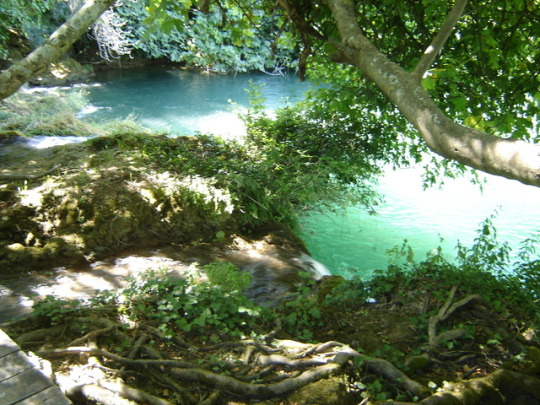
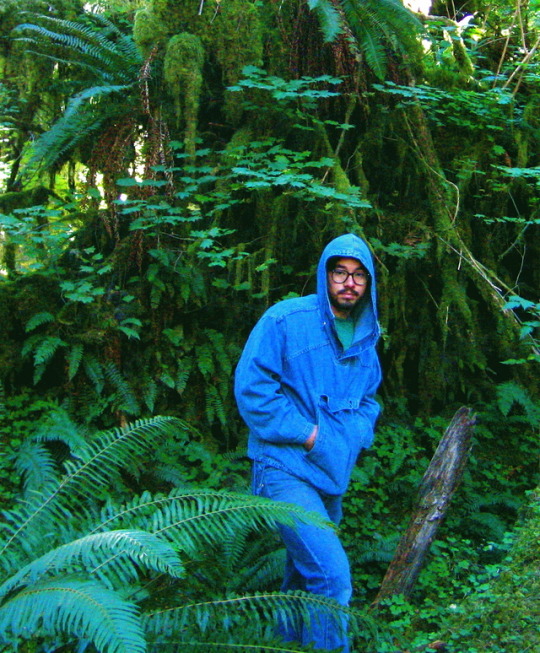
Fresh Listen - Lovehandles, Seafoam on Speakerphone (2010)
(Some pieces of recorded music operate more like organisms than records. They live, they breathe, they reproduce. Fresh Listen is a periodic review of recently and not-so-recently released albums that crawl among us like radioactive spiders, gifting us with superpowers from their stingers.)
Sometimes the best songs say less about the convictions of the singer, and more about the secret wish that burns in the singer’s heart.
I think of Bob Dylan’s “A Hard Rain’s a Gonna Fall.” If you pierce through the trappings of the hoary soothsayer, the prophecy he raps, and yodels for emphasis, is meant to be instructive, not necessarily foretold. “I saw a newborn baby with wild wolves all around it”; “I saw a highway of diamonds with nobody on it”; “I saw a roomful of men with their hammers a-bleedin’.” Throughout the song, you can hear the naked hope that events might lead to a more promising outcome if we pay attention, apply the symbology to the reality. “Hard Rain” is a warning, but it isn’t meant as a death sentence.
You can hear the same wish in the first track of Lovehandles’s first and only collection of songs arranged as a full-length record, Seafoam on Speakerphone. Under the auspices of his musical alter-ego, Tommy Yasuhara sings, on “Do What’s Natural,” “if you hold my hand you’ll understand / it’s all part of a plan.” At first listen, it may seem that Tommy is attributing the mostly misremembered episodes of a life to a predestined narrative conceived by a higher power. As a songwriter, though, Tommy is too interested in the ambiguity of existence to propose thoughtlessly surrendering to ideology. “Do What’s Natural” is surely a leap of faith, but, in very elemental terms, it simply illustrates the minor miracles inherent in living: fresh fruit flesh, hot cocoa in a warm room while the snow builds up on the windowpane. What’s important is that conscious action is required of us—the exercise of agency—to complement any experience. To live requires participation, not surrender.
“Do What’s Natural” initiates a kind of sonic continuity on Seafoam on Speakerphone. Reminiscent of Smog’s A River Ain’t Too Much to Love in the minimalism of its arrangements—mostly an exuberantly strummed baritone ukulele with ad hoc percussion (drums and machines, handclaps) and the occasional keyboard, kazoo, or recorder for coloring. Seafoam also carries forward Smog / Bill Callahan’s penchant for humor and deep reflections with an economy of words—some of which may first seem superficial—conveying big messages.
Contrasted to Callahan’s deep-earth baritone is Tommy’s equally resonant tenor, one of the sweetest set of pipes ever to be downloaded onto MySpace. Tommy effortlessly activates his vocal cords toward yearning soulfulness, deadpan bemusement, and punk-rock outrage, sometimes within the same song.
But one of the greatest songs on Seafoam is the record’s last track (also on the SoftSpots bandcamp sampler), an instrumental called “Lost Dog.” Tommy’s voice here is replaced by a four-note whistle, which appears only at the beginning and the end of the song. In-between is a finger-picked odyssey of masterful repetition and subtle variation. These snuck-in notes may be calculated in the abstract, but they come across on “Lost Dog” as improvisatory and inspired. At the risk of overstatement, the song is a compositional and technical achievement, not only in the context of Seafoam, but the as part of the entire Lovehandles catalog (of which there are literally hundreds of songs, most of them criminally unavailable). “Lost Dog” is a Fahey-esque guitar piece that doesn’t simply ape the master—it expands the emotional potentialities of the form.
Age and growth are the subjects of “Holiday on the Holodeck,” in which Tommy imagines the perfect celebration with friends and family across multiple time periods and places, getting nearer to the essence of the past as he moves farther away from it. Unfortunately, he’s unable to successfully replicate his idealized surroundings, nor the people that inhabit his fantasy space: “I couldn’t program it,” he chants at the end, coming to grips with the impossibility of his wish.
Instrumentally, “Asian Superstore” is the fullest track on Seafoam, with busy bongos competing with a syncopated marimba, and a single maraca holding the beat together. True to its title, the song is a celebration of the family-owned food mart and its superiority over the supermarkets and price clubs that are in a constant state of being built in every neighborhood. This kind of subject matter is exactly Tommy’s cup of meat. As an artist, his point is to ensure listeners take notice of the normally overlooked treasures of our American lives.
“Ladder on Wheels” is a pointless thought experiment, partially redeemed by a brief recorder solo near the end. Tommy goes toward raw Impressionism in “Hot Water,” a meditative sketch on the potential end of a relationship. The gentle rap of the cymbals recreates the stream of water and doubt that can fall upon one in isolation.
“My Little Cuckoo” is the first of Seafoam’s “avian trilogy.” A trifle of a song, “My Little Cuckoo” describes how a kind of strangeness can be the defining characteristic of an object of affection. Rockabilly punk, accented by an energetic and open hi-hat, fuels “Chicks Through the Grinder,” a commentary on the industrialized food sourcing that devalues the animals we eat and dehumanizes us as consumers in the process. Despite the heaviness of the lyrics, “Chicks Through the Grinder” is a fast, fun song—I can’t recall the numbers “six” and “seven” being expressed with such significance and intensity, since Black Francis laid down his vocal in the Pixies’s “Monkey Gone to Heaven.”
Closing out the “avian trilogy” is “No One’s Ever Innocent,” a contemplation of human capitalizing and exploiting, in seemingly harmless ways, the environment. In this case, a hummingbird feeder when winter hardens the sugar water: “Everything that we’re doin’ / somehow causes ruin / even when it’s not what we meant.” Over the course of just a few minutes, the song evolves into a metaphor on relationships, the harm we do to others when we attract them and try to keep them around. By eliminating the freedom that drew us to someone in the first place, we end up killing the core of the inspiration for our love.
On its surface, “Stay Home,” near the end of the record, espouses domestic tranquility. In the context of “Hot Water,” though, (a repeated “am I leaving you?”) and “No One’s Ever Innocent’s” zen-like expression of human-animal and human-human relationships, “Stay Home” resounds more like a deep-seated hope than a literal depiction, somewhat too rosy, of things as they truly are.
Which reinforces the strongest message of Seafoam on Speakerphone: that hopes, desires, and all the things around us that are in our possession and are forever beyond our possession require our attention, and with that, care, effort, and struggle, so that they can glow with true worth and possibility. These small components that sum up to a life—to make them real, Tommy, or Lovehandles, asks us to open our hearts. When we work at these moments of realization and visceral pleasure and doubt and confusion and pain, we might, despite falling short at times, have a short glimpse at meaning. And maybe even make it through okay.
1 note
·
View note
Text
Scientists Have Finally Found a Dinosaur’s Butthole, and It’s Pooping
A dinosaur that died some 120 million years ago has left behind such an exquisitely preserved cloacal opening—an orifice used for defecation, urination, and copulation—that scientists have been able to describe this multi-purpose organ in detail for the first time.
The “unusually fine preservation and fortuitous orientation” of this early Cretaceous genital-bum combo, which belonged to a dog-sized dinosaur called Psittacosaurus, enabled paleontologists to reconstruct its cloaca in three dimensions, according to a study published on Tuesday in Current Biology.
Led by Jakob Vinther, a paleontologist at the University of Bristol, the researchers added that ”no other non-avian dinosaur fossil preserves the cloaca” to their knowledge. The work could answer questions about the sexual lives of dinosaurs, the mechanics of their waste removal systems, and the similarities between cloacas in extinct and modern animals.
“Dinosaur skin is rare and often patchy and when we look at those fossils, the cloacal region seems to be always missing,” Vinther said in an email. “If you think of when animals decay, they often rupture through this opening, being the weakest part of the body surface.”
The Psittacosaurus specimen, however, was buried in a lake and entombed in a deoxygenated environment of mud and volcanic ash, which curbed its decay and prevented scavengers from tearing it to shreds. The animal also just happened to be oriented at an angle that showed off its cloaca, as well as what appears to be a fossilized piece of poop in the orifice.
“It is a combination of how it is exposed where you see it from below at an angle and then also the overall exquisite preservation that we have,” Vinther said.
The rare specimen reveals tantalizing insights about this under-studied part of dinosaur anatomy, including hints that the animal may have used visual or scent signals to communicate with other animals, perhaps in mating displays.

Psittacosaurus specimen from Senckenberg museum of Natural History, preserving skin and pigmentation patterns and the first, and only known, cloacal vent. Image: Jakob Vinther, University of Bristol and Bob Nicholls/Paleocreations.com 2020
From our mammalian perspective as humans, it might seem very odd to have just one hole, or “vent” as the orifice is typically called, performing such different functions. But we are actually the outliers: Most vertebrate animals have evolved cloaca to tend to their sexual and waste removal needs, as opposed to the multiple vents mammals use to accomplish the same tasks.
Birds, reptiles, amphibians, and fish are among the animals that possess cloaca, providing scientists with a comprehensive dataset for studying how these vents operate in modern biological contexts. But because cloacas do not fossilize as easily as bone or scales, paleontologists are left with little to work with when trying to understand the finer mechanics of how dinosaurs pooped, peed, and bred.
The Psittacosaurus specimen, which belongs to the Senckenberg Museum of Natural History in Frankfurt, Germany, offers a stunning exception to this rule. Vinther first glimpsed the dinosaur remains in 2009, while at the museum to study another fossil set.
“We took a look at it in the exhibit and I noticed the color patterns preserved,” Vinther said. ‘In 2016 we described those color patterns and then I also noticed the cloaca, which is what we describe now.”
The orifice is so well preserved that there even appears to be “an underlying cream-coloured amorphous mass inferred to be a coprolite”—the term for fossilized feces—“immediately inside the cloacal opening,” the study reports. In other words, the dinosaur may have had a round of poop in the chamber when it died, which was fossilized along with its cloaca.

Close up of the preserved cloacal vent in Psittacosaurus and the authors' reconstruction of it. Image: Vinther et al
It’s not clear whether Psittacosaurus had a slit-shaped vent, which is seen in crocodylians, or a rounded vent, which is seen in birds. But there is clear pigmentation around the specimen’s cloacal opening, as well as some characteristic swellings next to the vent, which could open a window into the potential behavior of Psittacosaurus.
Vinther and his colleagues speculate that the dinosaur may have flashed visual signals to other animals with its pigmented colors. The swellings may have contained scent glands, similar to those seen in modern crocodilians, enabling the dinosaur to communicate messages, such as its receptivity to mates.
“We see that the dinosaur made the cloacal opening visually attractive,” Vinther said, adding that “this may be a rare glimpse back to a time when dinosaurs roamed the Earth and strutted their rear-end multipurpose opening at each other in order to get lucky.”
Scientists Have Finally Found a Dinosaur’s Butthole, and It’s Pooping syndicated from https://triviaqaweb.wordpress.com/feed/
0 notes
Note
oo can u please tell us a hit more about jakosian races and how many there are? Cx they seem so cool~
I’d be happy to! Actually there are a couple links in our forum that cover all the Jakosian races. We don’t have information on the Radiants yet as the opportunity to work with them only opened up a few months ago, but you can find all the information on the races via our website encyclopedia or the listings themselves. ^-^
I’m going to post the forum thread below. Here’s the link to the Jakos Sublime page, which is separate from the forum post.
~
I think it's about time that I talk a little more about the Architects--who they are, what they do, and how they fit into the world of Jakos in the first place.There are six total Architects that are worshiped on Jakos. (There are actually seven Architects, but one is sort of their equivalent of Satan. But I'll get to that.) The Great Architect is the Immortal who gave life to the world to start, and created countless mega structures and cities across its surface. His name is Jakosrayovec--the same name that he gave to the planet. It also means "luminescence." Most everyone simply calls him Jakos. He is a galactic demonic force, and from my experience he has quite a large ego. If naming his own planet after himself wasn't enough of a clue, Jakos was the starter of most physical trends. He created the Jakos Demons, who are all reflections of himself.The second Architect who joined Jakos to assist in his creation was Vestrayn, or "darkness." Vestrayn is a being rarely spoken about. As Jakosians thrive off sound and light, they shun Vestrayn, who is a bringer of silence and shadows. He is related to Jakos and is necessary in order to have balance. Some say that he is also a Great Architect.The third Architect is known as Skul, whose name means "manifest." She is a lover of all things high class, and the beings that she created are known as the Neon Nobles. They're a race of reserved Jakosians fixated on social status, eletism, and order. Most of them have the mentality that in order to survive, you must be on top. Skul is no different in personality. She is aloof and collected, and has her own large following because of her "cool" aura and fancy tastes.The fourth Architect is Thorandorek, which translates to "self-creation." She is the Immortal who reigns over Ego, which plays a huge role in Jakosian lives. She did not contribute to the creation of a race of Jakosian, but helps in both balance and seperation of the types. She's contradiction and perfect blending at the same time, because she is both male and female. Thorandorek is a hermaphrodite, and allowed hermaphroditism to be possible on Jakos. The reason that she presides over Ego, however, is because she's devoted to giving Jakosians the will and drive to be whoever they want.The fifth Architect is known as Anhasi, which means quite literally in the Jakosian language "abhorrant." He is unique because he contributed to the creation of Jakosians by adding the race of the Demented. They are rough and unnerving Jakosians who enjoy pain, self-mutilation, and pretty much anything that would cause serious aversion. Anhasi is necessary, as he believes that perfection doesn't exist, and instead Jakosians are to achieve their own perfection by practicing forms of art, no matter what kind of art that is. Gender-bending is not only an art on Jakos, but a very common trend, and Anhasi is actually said to be female. He is always refered to as male, however, and holds the appearance of an androgyne.The sixth Architect is named Bladio, which translates to "ferine" or "wild." He was the creator of the Furfolk, who are a race of Jakosians who physically possess animalistic characteristics. Furfolk is an umbrella term that also includes avians, amphibians, aquatics, and reptillians. He is known for being extremely high in social status, and owns not only his own fashion line, but also is the creator of the largest online virtual communities on Jakos. He's well respected and liked, but sometimes seems a little desperate in personality.Lastly, called quite literally "the nicest Architect of them all," is Asyx, which means "rejuvenation." He did not contribute to creating a race of Jakosian, but he has the biggest band of devotees besides Jakos himself, and most of them took to calling themselves the Asyki, or in an English equivalent "the Angels." They normally possess white hair or light-colored eyes, and are the only group of Jakosians who don't normally decorate themselves in modifications like bioluminescence, tattoos, or surgical implants. They believe in keeping themselves "pure," because Asyx does not mod himself. He's known for being the most popular Architect besides Jakos and Bladio, and is also known for having a soft demeanor and very kind personality.Each Architect symbolizes a story, of sorts. Jakos is Inspiration, Skul is Manifestation, Thorandorek is Conceit, Anhasi is Mania, Bladio is Desperation, and then Asyx is Return. Basically the story goes that an individual has an idea, so he manifests it and molds it to make it his. In his success, he becomes conceited, which leads to mania when he gains so much power. Discovering the loss of everything else in his life, the individual gets desperate and starts searching for a way to come back down, so finally he drops what he created in the first place in order to obtain that feeling of mortality again. It's a very old story on Jakos, and a fable to never let too much power go to one's head. They believe that even their Great Architect has his limits.So I've outlined a bit about the Jakos Architects, but I wanted to go into more depth about the Jakosians themselves.For those of you familiar with the Jakos Demons, I won't talk about them extensively here, but I felt the need to include them anyway because they are, after all, a huge part of Jakosrayovec. The Architect Jakos created the Demons, who look extraordinarily similar to him. Know that dark-skinned, green-haired Demon wearing the eye piece and ring decor in my album? That's Jakos. At least... how he appeared to me on the day that he introduced himself as a god of the world. His Demons often possess horns, tails, hooves, pointed ears, or tan to dark skin. They decorate themselves in bioluminescent injections and fancy tattoos, which are very similar to Jakos's, except Jakos himself can create luminescence on his own. The Jakos Demons thrive on simple pleasures. Smoking, drinking, partying, hallucinogens and stimulants, good food, sex, etc. They are the dark, carnal beings of the night who lose themselves in music and dance. The Jakos Demons were originally the first Jakosians to be created, and were simply considered "Jakosians" and not "Demons" of any sort, but they later gained their name as their appearances matched the more carnal, feral looks that many demons possessed. Also, as Jakos began recruiting other Architects, the idea of other Jakosians grew to fruition, and the Demons needed a name and image to hold to consider themselves unique to Jakos himself.Although there is really no say as to which Architect created the next set of beings, the next ones I want to talk about are the Neon Nobles. Originally created by Skul, the Architect of social class and manifestation, the Nobles are beings of order, secrecy, creation, business, and social success. They're often times rich and/or famous, and they love to drown themselves in luxury. They're not liked all that much, because they're often regarded as snooty or pretentious, but this isn't often the case. The Nobles aren't always born into richness, but have a naturally charismatic charm to them that can get them on top of society swiftly. Skul, who took after Jakos quite a bit, created the Neon Nobles to easily retain luminous injections. Their skin is sensitive and actually translucent, and although lumi fades after a month ortwo, Neon Nobles can keep their colors for much longer than any other being. They are frequently decorated in lumi--often times more than even the Jakos Demons, and will wear outfits that glow, radiate color, or possess high contrast. This, of course, is how they gained their name. Instead of enjoying self pleasures like the Jakos Demons, the Neon Nobles enjoy conversation and fancy get-togethers over almost anything else. They will talk your ear off if you let them, especially about philosophical discussions or the quality of music tastes and fashionable dress. They're classy, refined, charismatic, and they easily make friends with like-minded individuals.Next on the list are the most feared and avoided beings on Jakos. Created by the infamous Anhasi, Architect of abhorrence and, ironically, art... the Jakos Demented are the crazies of society. Anhasi wished to contribute to the creation of mortals by giving the world little portions of himself. The Demented encompass Anhasi's complex thinking and dangerous mind. The Demented are trouble makers. They are often the beings found in prison for doing wild, crazy stunts. They're renowned on Jakos for self-mutilation and artistic scarification. They tempt people to think outside the box, and to face their fears with wild abandon. They are often difficult to look at, as they take pleasure in the grotesque sides of mortality and aren't afraid to mar up their faces or bodies for their own enjoyment. They enjoy pain--both giving and receiving--and are often not perfectly stable mentally. They are into tattoos and lumi, as well as sugically modifying themselves. What is unique about the Demented is that all other Jakosians can fall into their category. It depends on how far skewed the Jakosians' thoughts have gone, whether they have gone crazy, or are simply into the more perverted realms and taboo ideas of society. The only major worry about the Demented is that they are the wild cards of Jakos. They can be dangerous. And for that reason, any Demented binding done in our shop will be screened and done by Anhasi himself, as he has agreed.The Jakos Furfolk are a race of people who physically possess animal-like characteristics. They were created by Bladio, who holds the appearance of a Fur himself. They are likeable beings who are some of the easiest to get along with. They are social and love to band together to share similar tastes. You could easily relate them to the "furries" of Earth. They're normally very playful and youthful, and enjoy online communities or invite-only parties. They're not very big fans of Neon Nobles, as they typically dislike politics or any thought of rising high in social status. There are several branches of Furfolk, which is actually an umbrella term to cover several animal-type beings. There are the Mammilians, Avians, Reptilians, Aquatics, Amphibians, and Insectoids. Each type has its own unique characteristics, but some are rarer to see than others. The Amphibian and Aquatic beings normally live in select few cities where entire waterway systems have been built for them to travel around from place to place. They frequently keep to themselves instead of mingling with the other types. Despite the Furfolk being labeled by fur, it's actually the Reptilian race that has the biggest appearance on Jakos out of the bunch.Architect Asyx's Jakos Angels are actually not Angels at all. In fact... Asyx didn't even create them. The Angels are Asyx's devotees, and are actually called the "Asyki" on Jakos, which basically means "Asyx's loyal followers." The reason they are compared to Angels, however, is because of their do-gooder personalities. They're frequently devoted to bettering the community around them. They get along with all the other races, but often are friends to the Demons and Furfolk. Contrary to any premade judgments, the Angels actually get along best with the Demons, because they are quite opposite in personality. The only beings they have trouble hanging around are ofthen the Demented, since the Demented are so difficult to understand. The Angels prefer not to be in the spotlight, but it doesn't stop them from joining in on parties and music if it's available. They're the most laid back of all Jakosians, and prefer to stay lowkey and reserved if at all possible. They enjoy quiet evenings just as much as the high energy ones, but definitely prefer general comforts over much else. Slow, easy music, warm drinks, and lounging around to watch television or casually gaming are their favorite things to do. Since they are Asyx's devotees, they frequently take on a similar appearance to him. Asyx has white hair and pale eyes, and so his Asyki have that as well. They don't generally decorate themselves in modifications or lumi, because Asyx does not. They're known as being the "pure" Jakosians, which only adds more to their Angel nickname and the idea that they are the compatible opposites of the Jakos Demons.There are occasions when two different races can mix, like with the case of the Demented and the others. I've been witness to an Angel getting modded to be a Demon, or a Noble dropping their status and joining Asyx's devotees to be an Angel. But it isn't common. In their blood they still carry the genes of their Architect's faction. The only exception to that are the Demented, who are immediately taken under the wing of Anhasi if a Jakosian loses their mind. If two Jakosians of different races decide to procreate, their children are often one or the other, and their genes do not frequently mix. A Fur and a Demon will create either another Fur or another Demon, rather than a Demonic Fur. Same goes with a Noble who decides to get with one of those two. Although the Angels and the Demented can mix and match, the other three races cannot. The Angels can actually be any of the races. I've seen some with animal characteristics or translucent skin like the Nobles. There is no "blank slate" Jakosian, as each one fits into one of the five races. As stated in a previous blog, the Architects Thorandorek and Vestrayn never contributed to the creation of the Jakosians, but they do play a huge part in their lives. Anhasi was inspired by Thorandorek to gender-bend, and many of the Demented are inspired by Vestrayn to find comfort in darkness.
3 notes
·
View notes